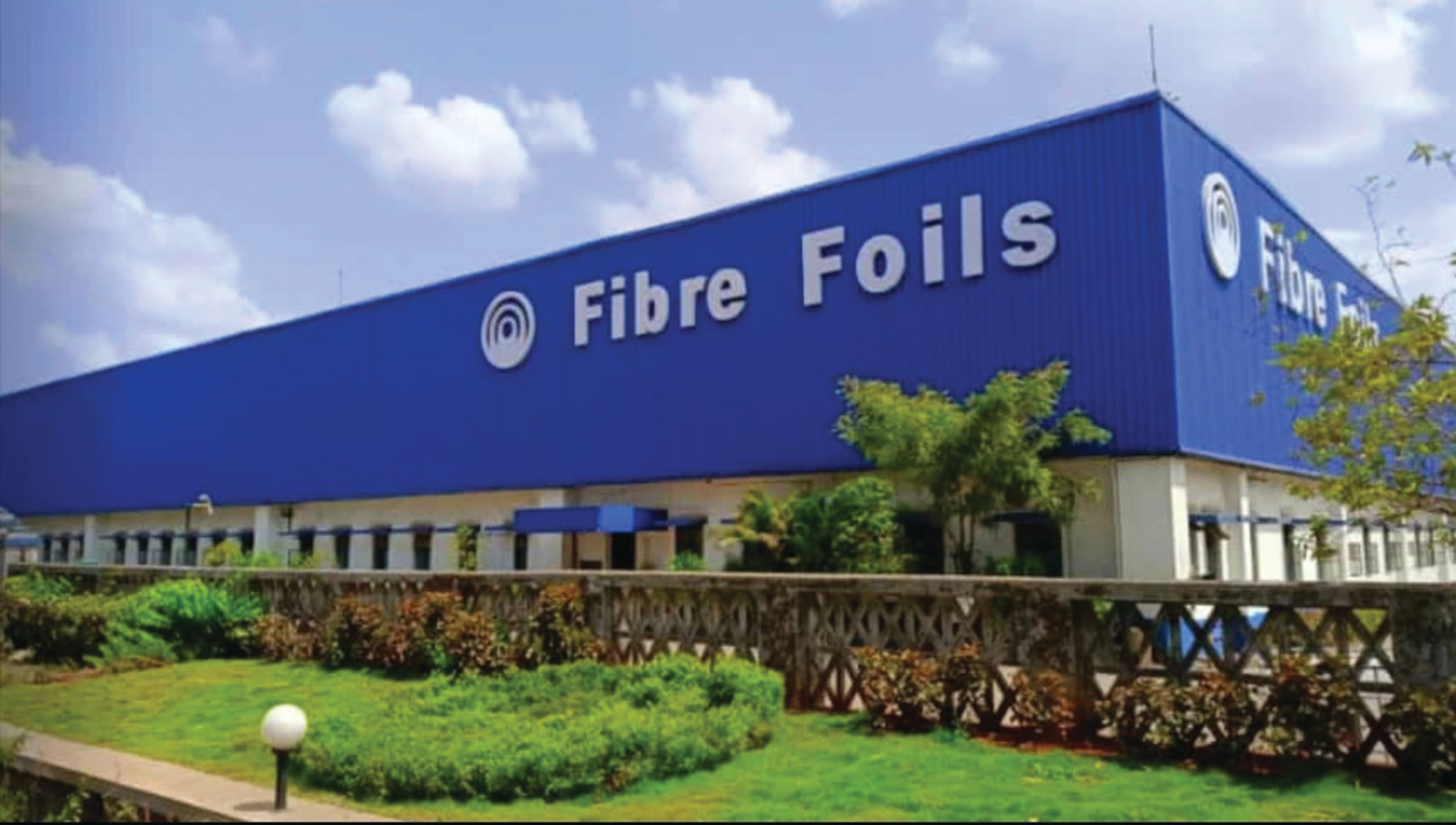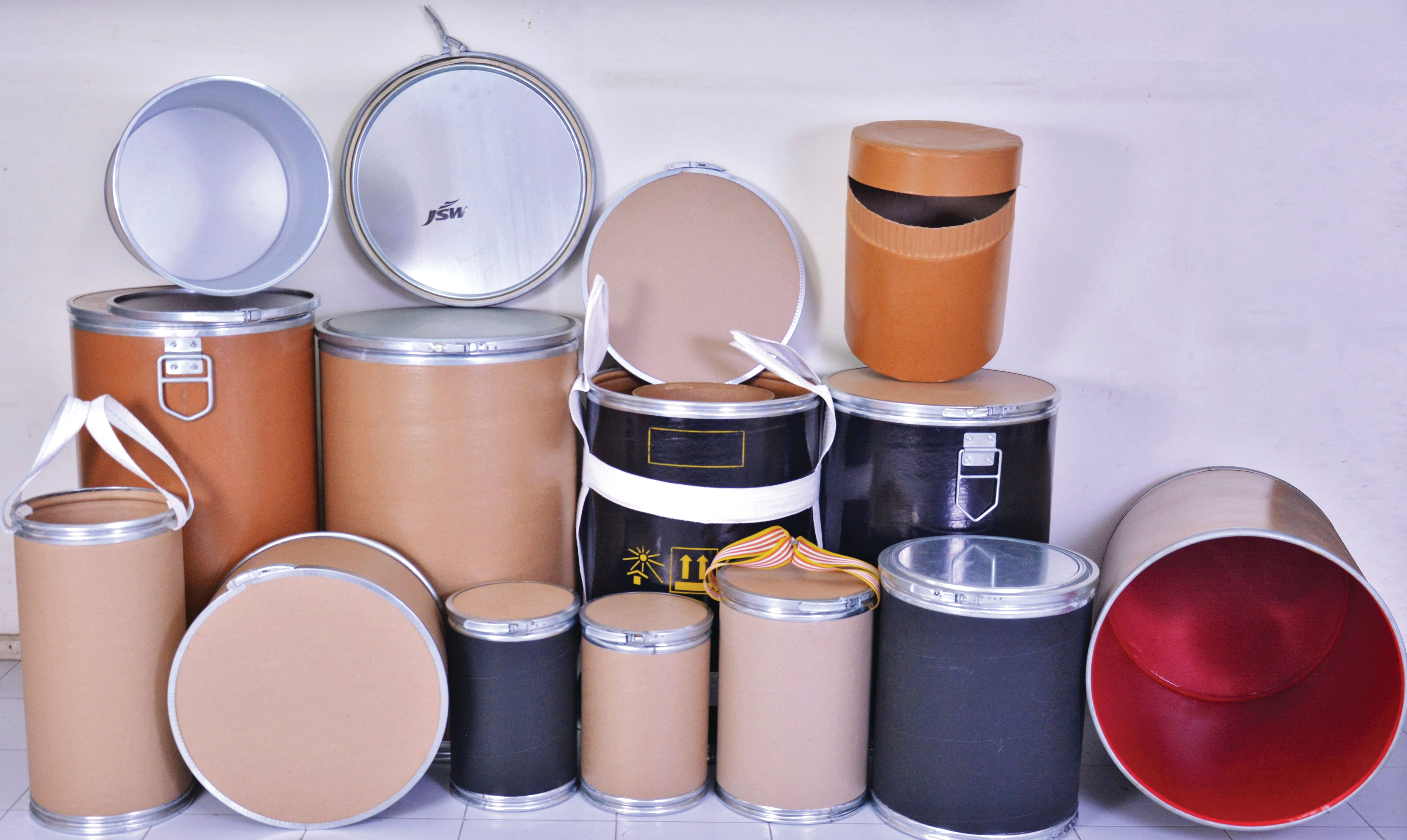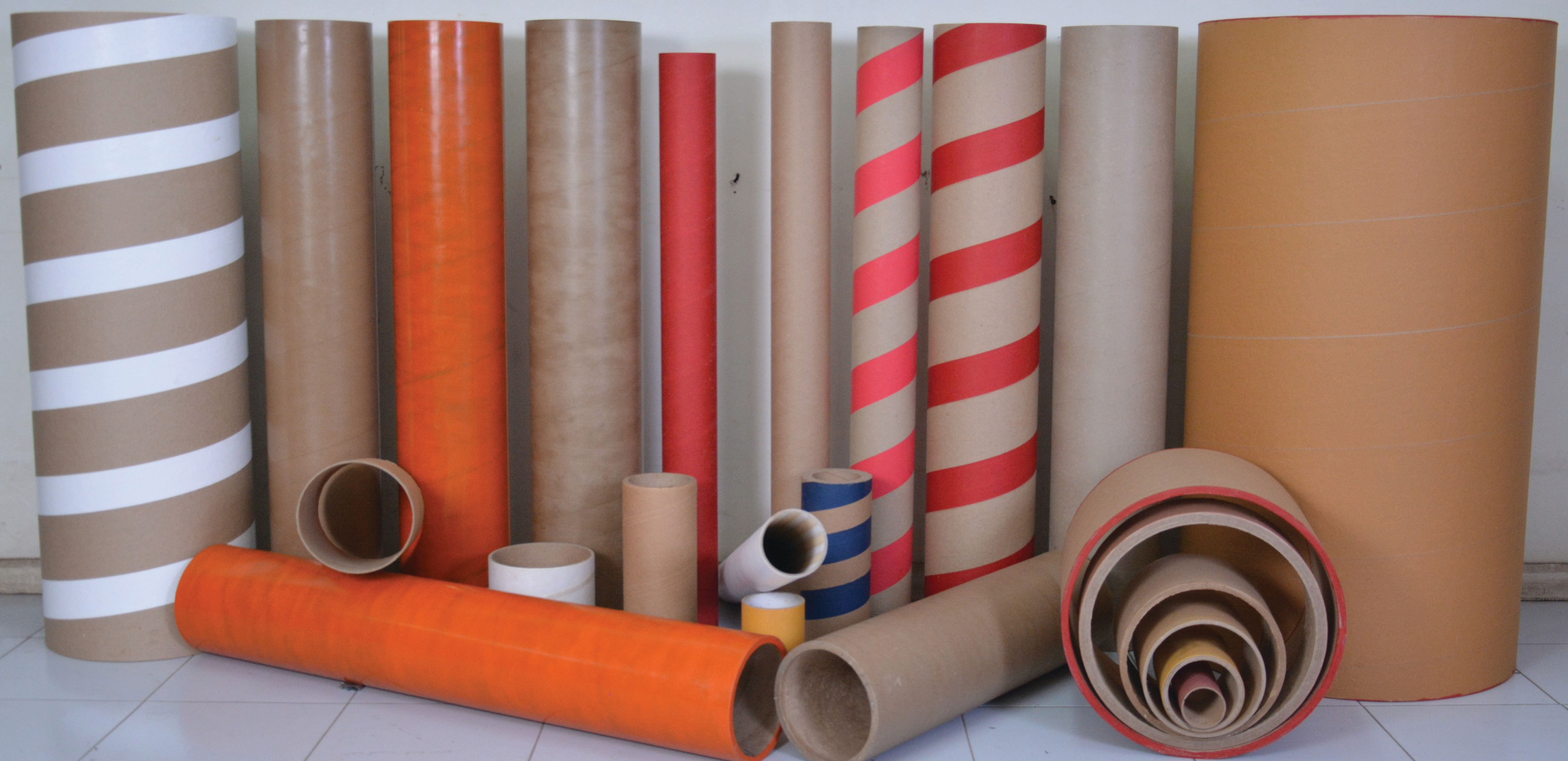Fibre Foils: A stakeholder in the Rs 1,000-cr consumer packaging segment
Diwakar Shetty, chairman, Fibre Foils in a conversation with Ramu Ramanathan of WhatPackaging? talks about Fibre Foils, its journey, the product portfolio and technology
29 Apr 2024 | By Ramu Ramanathan
Fibre Foils (FF) was established in 1969 and went into production in 1970. The first unit was located in Andheri MIDC. Today, FF is a leader which specialises in the field of composite cans which are meant for consumer packaging such as snacks, food, nutritional powder, cookies and bakery products. The group is planning to diversify into other packaging segments, Diwakar Shetty shares exclusively with WhatPackaging?.
FF converts paper into different packaging solutions for industrial and consumer packaging. Paper cores and fibre drums are a part of industrial packaging.
For this, FF relies on its 10-acre factory near Mumbai, at Khopoli which was set up in 1992. The first factory was started in Bengaluru in 1978, and the third one was in NCR-Bhiwadi (Rajasthan). All three factories are ISO 9001:2015 certified.
The main products are paper packaging products. The company’s focus is rigid packaging solutions. These, as readers of WhatPackaging? magazine are aware, have good printability.
It is no surprise that FF has been recognised for Innovative Packaging (India Star) by the Indian Institute of Packaging and given the Award for Packaging Excellence (World Star) by the World Packaging Organisation.
Ramu Ramanathan (RR): What are the top-line numbers we are looking at for this sector?
Diwakar Shetty (DS): I would say Rs 1,000 crores.
RR: What were the technology highlights in the 1970s, and what is the transition we are seeing now?
DS: Earlier composite cans were meant for dry products like powder like Vim. Later, the product portfolio moved into food products, mostly snacks. The technology we use includes liners of laminates, which are moisture-resistant. We also deploy multilayer inside liners and technology with special adhesives.
RR: What is the biggest challenge you have had to address?
DS: When we have to ship the product from our facility to distant places, our products could gain moisture in transit due to different relative humidity (RH) levels and paper being hygroscopic by nature. We have to prevent that from happening. The technology we use ensures this. It provides rigidity, moisture protection, and surface finish.
RR: In what way? Please explain.
DS: For example, our customer in Taloja supplies thinner gauge foils to its customers. To help with this process, the company rolls the foils on our paper spools. The end customer wants to be able to use the foil until the very last layer on the spool. Therefore, a smooth surface finish is necessary to eliminate or reduce any impression on the initial foil wound on the paper spool. Surface finishing, moisture content, rigidity, compression strength and straightness are all essential factors in achieving this. The first reel or coil is put in the winder and runs at a high speed, which can cause it to jump and produce vibrations. This stage is critical to the manufacturing process.

Fibre Foils boasts a team size of 600 people across three factories.
RR: I see other applications in your product gallery…
DS: Yes, for example, for the fibreglass industry, we provide the paper former. This particular product has high-speed yarn, and after winding, it passes through extreme temperatures and humid conditions.
RR: Who are your customers?
DS: We are servicing leaders in the steel, paper, aluminium, fibreglass and polyester or BOPP segment.
RR: Can the sizes be customised?
DS: Yes, these can be customised. The core diameter can be from 52-mm to 605-mm, with a length of up to five metres. We transport these in closed containers to avoid damage in transit.
RR: What is your definition of quality? What is your investment in the quality department?
DS: We have an R&D centre in Khopoli which formulates our adhesive in-house. Also, we develop moisture barrier coatings for our products.
RR: Typically, how long do these projects take to create?
DS: We have a group of key customers. They are aware of everything that’s happening. We keep our customers in the loop along with the tracking details. It takes five to six months to get new customers, after several trials, and tests.
RR: What has changed according to you in the last 10-20 years?
DS: Process improvements have been made by upgrading the drying system considering geographically different relative humidity observed across India and globally. Moisture content and its management are critical. Therefore, we have made a big investment in moisture control.
RR: Why is moisture so important, is it because of the weather conditions?
DS: In India, we have a monsoon season lasting more than three to six months. Also, coastal areas have high humidity and landlocked areas have dry climates. During the monsoon season, the relative humidity goes up to 90%-95%, and during summer, in landlocked regions, the relative humidity goes as low as 30%. Our customers from the coastal region supplying the material to its customers in the non-coastal region encounter these problems. Change in moisture content in our product reduces its strength and also impacts the inner diameter, outer diameter and length.

The technology Fibre Foils deployed includes liners of laminates, which are moisture-resistant. Also, the group deploys multilayer inside liners and technology with special adhesives
RR: Is there anything new which is happening in terms of reducing weight, which you think is probably the next big thing?
DS: Yes, we are working on making the materials light in weight. We are convincing the customers that even though it appears thin, it will serve the purpose. It is paper and adhesives, which bond it, and we use long fibres. We use a scientific mix of that, and multiple layers of paper.
RR: What is the mantra at Fibre Foils?
DS: We focus on three P’s - people, process and product. People influence us so much that they are a part of our technology, then we have process improvement and continuous automation.
RR: That’s the technology aspect, what about business?
DS: For that we have the three C’s - customer, cost and cash (financial health).
RR: And what is your core strength at Fibre Foils?
DS: Quality, followed by service and reliability. And above all, our people. We boast of a team size of 600-people across the three factories. People who are working with Fibre Foils have been doing so for eons. The attrition rate is not even 1%. We take care of our employees and they feel like they belong here.
RR: What is the system to induct newcomers at Fibre Foils?
DS: It is quite simple. First, the trainees enter at the operation level, then they look at the problem. Then in the R&D department they understand what can be done to solve the problem. There is a training hierarchy and the process of mentoring is followed; from junior operator to operator, then to another senior and so on.
RR: Any failure lesson that you learned from a downfall?
DS: Product disruptions are a failure.
RR: Can you give an example?
DS: We supplied Vim with 15-lakh items per month across the country. Later they changed their product format, from powder to liquid. This means that you cannot depend on one single product and one customer. Versatility is the key. Now we ensure there is no customer with more than 25% of the market share.
RR: Any more setbacks or learnings in terms of a machinery investment?
DS: Oh yes. We had bought a machine from Germany during the 1990s which would convert all the products into composite cans, that’s what we thought. But that was only possible in Europe and not in India. We learned that we should not invest in high-tech machines. That machine has a dedicated line, so we couldn't run multiple products 24/7. We did not have one single product, but an array of different products running throughout the day.
RR: What would be the competition between Europe and us? Do they outperform us by 5x?
DS: More than 5x. Europeans have one line dedicated to a single product, with high speed, and high cost of the machine. Their investment in technology is high, and so is their returns in terms of productivity.
RR: What is the FF method?
DS: We have a solid quality focus. There is a fully equipped quality laboratory for testing raw material and finished product. Also, well equipped tool room to support R& D and manufacturing lines. This ensures periodic maintenance and new developments.

RR: And your USP is?
DS: Other than our people it is our in-house manufacturing facility for adhesive and component to maintain quality standard and timely deliveries, and capacity to scale up production / output to meet customer’s increased volumes / enhanced capacity in scheduled time frame.
RR: And the reason for three manufacturing facilities is?
DS: To provide logistical benefits to our customers. Our products are volumetric by nature and our key clientele is spread across India.
RR: Also, there is a substantial presence in Europe and the Middle East. What would be the percentage for Fibre Foils?
DS: We supply about 35% of our capacity to Europe and the Middle East.
RR: This is your brand of laminated composite containers, isn't it?
DS: Yes. Internally we have branded them as Ultra, Deluxe, and Excel.
RR: Plans for the next 12 months?
DS: We are looking at acquisitions and expansion. We would like to diversify our business into paper-based packaging solutions in rigid / non rigid packaging.
RR: As the vice-president of Metal Containers Manufacturers Association (MCMA), what is your message for the government?
DS: Food processing is top priority. Likewise, the packaging of processed food. There should be an emphasis on packaging machines. Without packaging lines, no food can be processed.
Fibre Foils products - at a glance
Paper tube / Paper core / Paper Spools: Custom-made paper tubes / cores with high crushing strength, mirror finish surface for polyester industry. Catering to the manufacturers of paper, metal and polyester film segments.
Composite cans: Fibre Foils offers composite cans of international standards in different sizes and types. Construction of composite cans is made to suit the requirements of the products to be packed. General Purpose container cater to liquor, perfume, oil / grease and automobile segment
Fibre drums: Spiral and convolute-parallel wound fibre drums are manufactured to meet international standards. Materials packed in fibre drums are exported across the globe. Segments such as pharmaceutical, chemical and engineering are serviced by Fibre Foils. One of the leaders in pharmaceutical, chemical and engineering segments is serviced by Fibre Foils.
Composite and general purpose container: A production line to manufacture international standard composite containers for packing food grade products such as snacks, food, bakery products, and health drinks. General purpose containers cater to liquor, perfume, oil grease and automobile segments.
Edge protector / angle board: Edge boards are rigid and provide exceptional strength. It provides stacking strength and cushion package against hard knocks. Fibre Foils possess a range of sizes with length and thickness options. The edge boards manufactured by FF are made using the latest technology.


